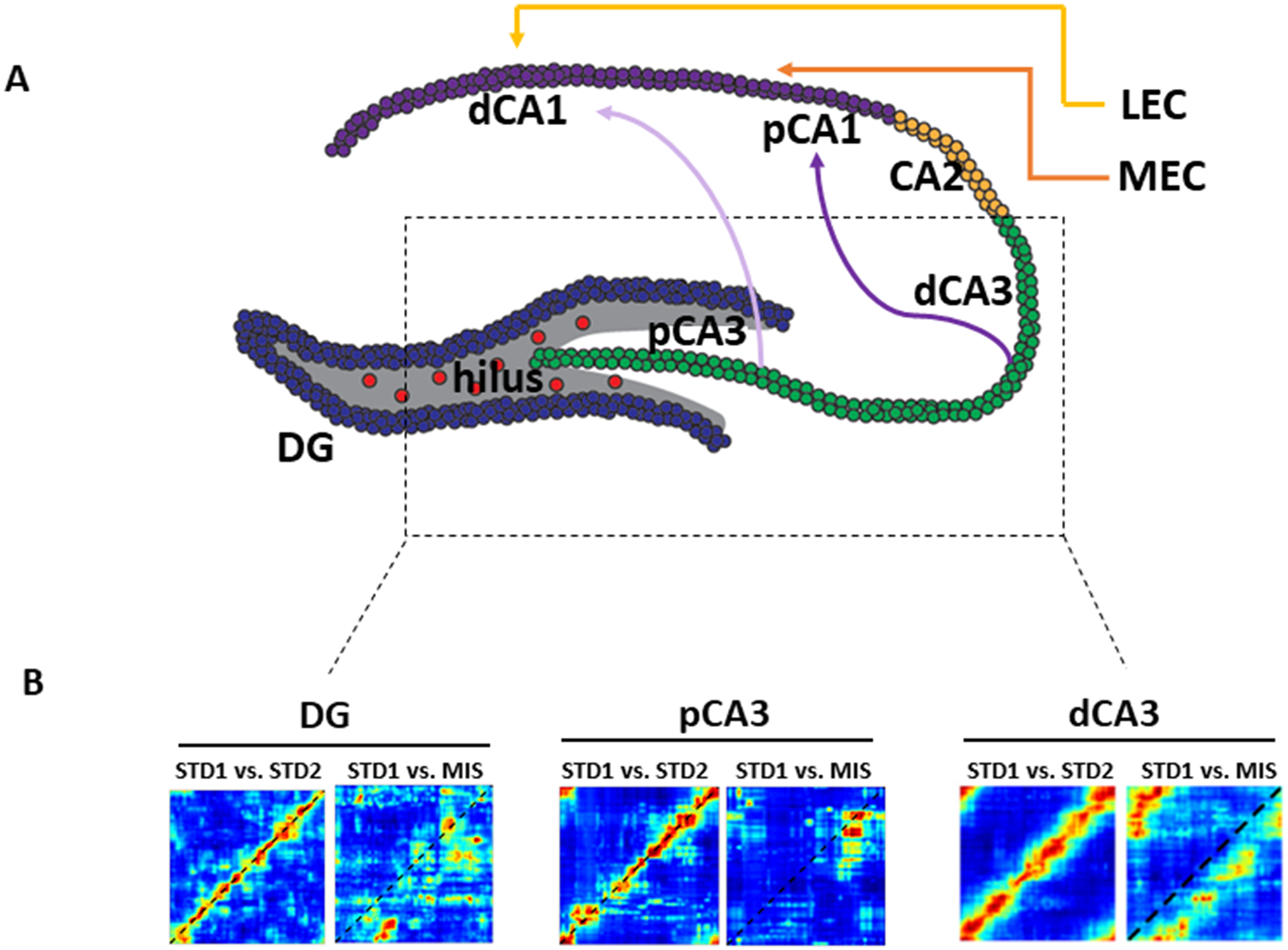Figure 1:

Anatomical and functional organization of DG-CA3 system. A) Topographic organization of parallel processing streams along the hippocampal transverse axis. Proximal CA3 (pCA3, defined as the part of CA3 closer to the DG) projects preferentially to distal CA1 (dCA1, defined as the part of CA1 farthest from the DG along the pyramidal cell layer). Distal CA3 (dCA3), on the other hand, projects preferentially to proximal CA1 (pCA1). pCA1 and dCA1 also receive preferential inputs from the MEC and LEC, respectively. B) Neural population evidence of functional heterogeneity in DG-CA3 system. Cell were recorded in DG and CA3 while animals ran on a circular track with local texture cues and global landmark cues. When two sessions with identical, standard arrangements of local and global cues were compared (STD1 vs. STD2), all 3 areas showed highly correlated representations, as indicated by the heat bands along the main diagonals of the correlation matrices. When local and global cues were in 180° conflict, population activity in DG and pCA3 showed decorrelated representations between the standard and the mismatch sessions (STD1 vs. MIS), as shown by the loss of the high correlation band. In contrast, population activity in dCA3 maintained correlated representations. Thus, pCA3 and DG appear to act as a functional unit for pattern separation, with dCA3 performing the classic computation of pattern completion. Adapted from GoodSmith et al., 2017, 2019; Lee et al., 2015.
